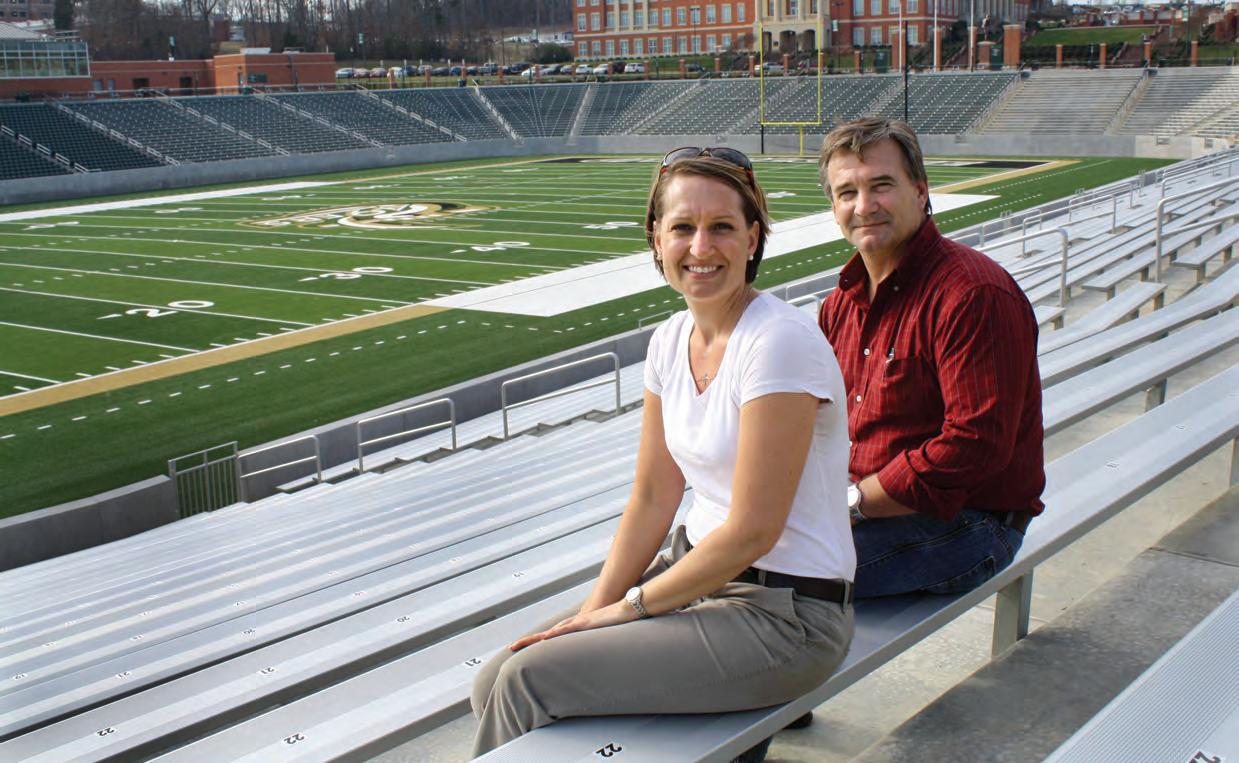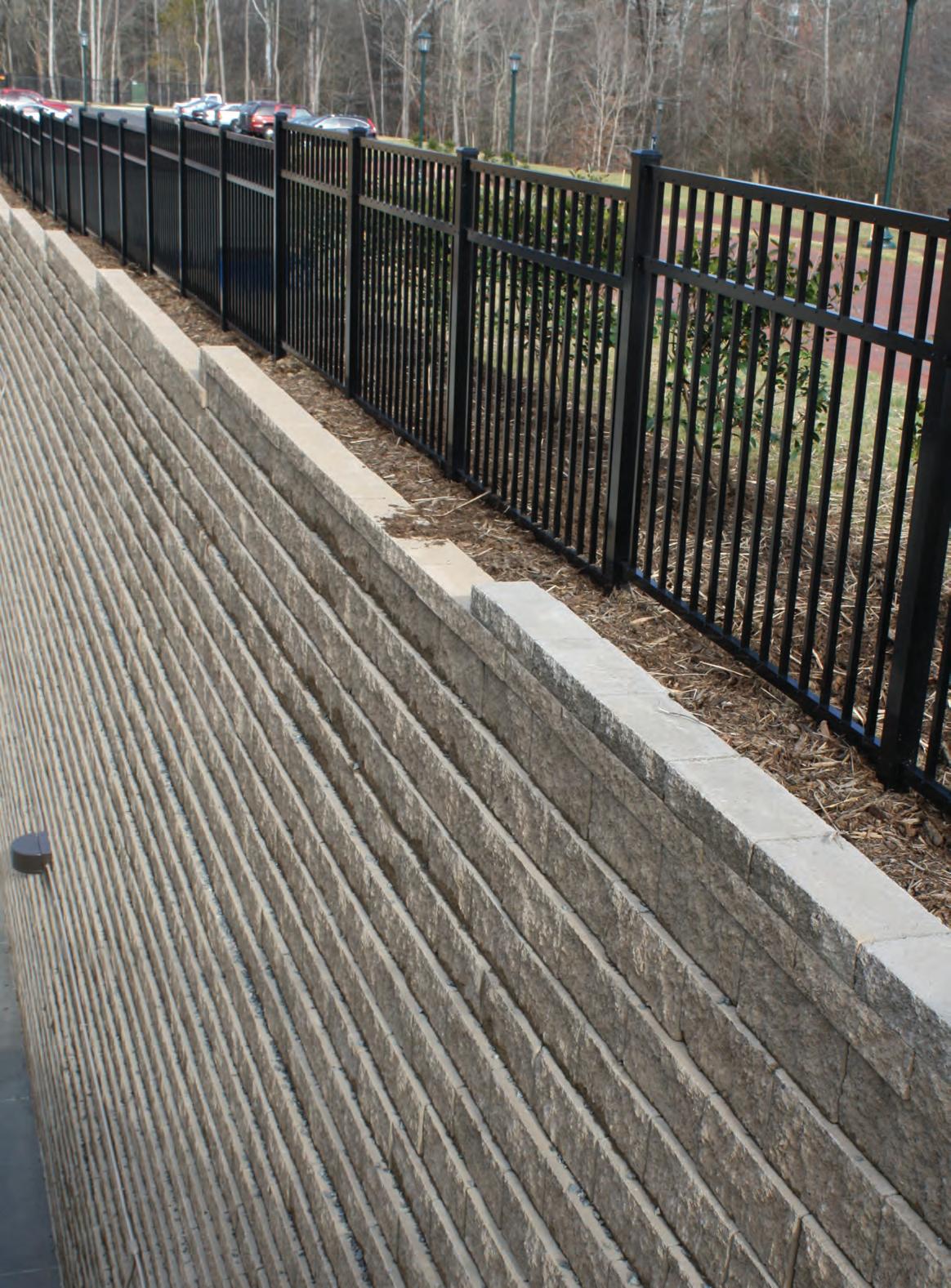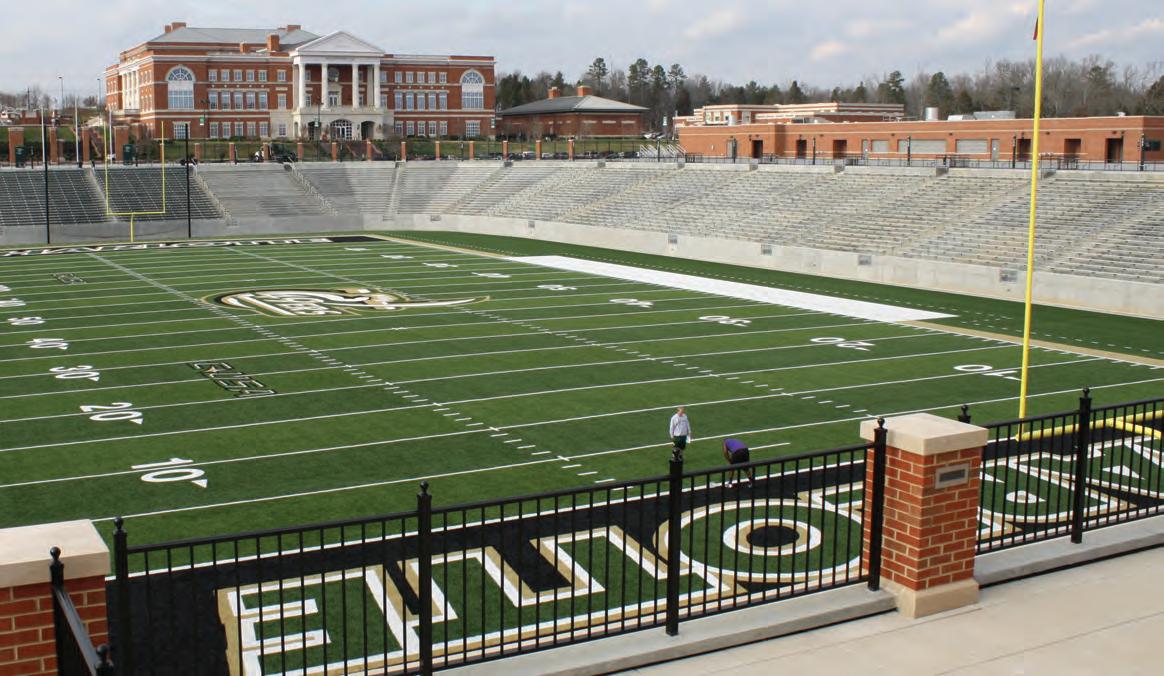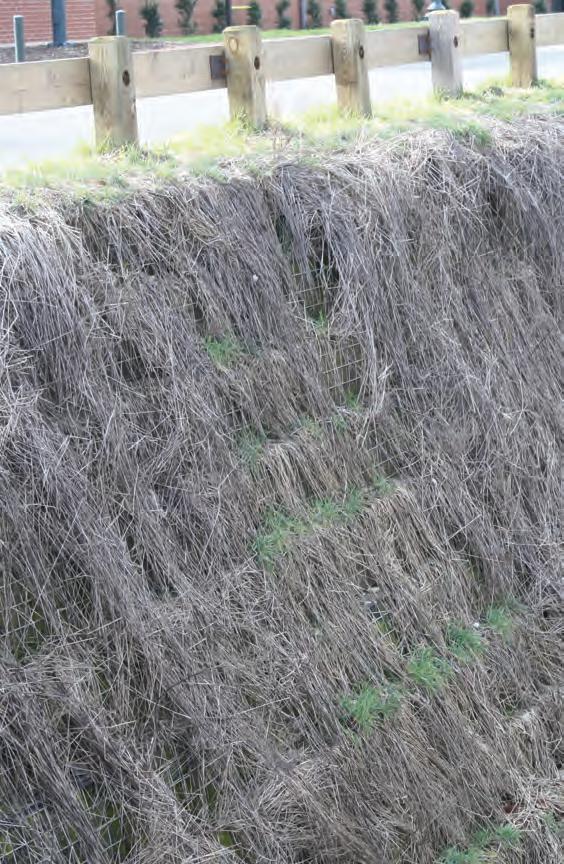
2 minute read
New Football Stadium Illustrates Sustainable Practices
from Raven Issue No. 18
Football is a rallying point for every major university, uniting students, alumni and other supporters around an institution’s mission and vision. It is with this goal in mind that the University of North Carolina at Charlotte is launching its first football team, the 49ers, this fall in a brand new stadium that recently won an engineering excellence award from ACEC (American Council of Engineering Companies) of North Carolina.
From the outset, engineers, architects and builders recognized that building the new stadium would present unique challenges. The 24-acre site was relatively compact for multiple intended uses, budgets were under close scrutiny and the University had high expectations for a beautiful, sustainably-built facility that would further its image as a leading institution of higher learning. By every measure the new UNC 49ers stadium is measuring up.
Advertisement
“It was the combination of factors that made this project unusually complex and challenging,” said Kristen Hill, senior geotechnical engineer with S&ME, Inc. of Charlotte. “It required our best efforts at value engineering with the inclusion of sustainable approaches that offer proven results while reducing costs.”
“Stewardship is a core value for the University, and the stadium project team helped UNC Charlotte remain true to this value.”
Bob Greger
In order to build the stadium bowl, more than 30 feet of soil excavation was required, which placed the field below groundwater level. Engineering and construction teams developed a dewatering system that controls and captures the groundwater, which can be used for future irrigation needs at the site.
A stream and wetlands adjacent to the 15,000-seat stadium also had to be protected, which was achieved by creating reinforced slopes using wire baskets and natural vegetation rather than more costly options of concrete and steel construction. Other slopes throughout the site, including those at pedestrian bridges, are also reinforced using similar soil reinforcement techniques rather than more traditional concrete walls. >

Significant cost savings were also achieved with the construction of the two-story field house. A pressure relief wall, which incorporates geogrid materials from Glen Raven’s Strata subsidiary, was used to relieve lateral earth pressures against the basemen t wall of the field house. The result is a structural advantage for the field house while also significantly reducing the size and cost of the basement wall. Segmental retaining walls, also incorporating Strata soil stabilization products, were constructed adjacent to the field house, again resulting in significant savings compared to cast-in-place concrete.
“As an engineer, it’s my goal to achieve the very best project that aligns with my clients’ values,” Hill said. “We balanced cost, performance and safety during and after construction throughout the UNC stadium project.”
According to Bob Greger, construction project manager with Draw Enterprises of Charlotte, the design, engineering and construction team for the UNC stadium achieved superior results because of its ability to apply sustainable techniques.
“Stewardship is a core value for the University, and the stadium project team helped UNC Charlotte remain true to this value,” Greger said. “The result is a highly sustainable project that assured the greatest value possible for the University.”

RIGHT Wire basket and natural vegetation were used to stabilize slopes around the UNC Charlotte football stadium, resulting in a solution that was less costly and more environmentally friendly. BELOW An excavation of more than 30 feet was required to create the playing field for the new UNC Charlotte football stadium, which created challenges that were met with sustainable construction approaches.










